Underwater sound and Radon measurements of rainfall and wind at sea
Main objectives:
- Study of the environmental total gamma ray intensity increase due to high precipitation events and its correlation with precipitation rates
- Quantify the error characteristics of acoustic measurement of rainfall rate and wind speed at various
temporal scales of aggregation, and with respect to different rain types (e.g., drizzle, stratiform, convective)
- Operational tests of an innovative underwater passive acoustic system (PALIII) coupled to
an environmental gamma ray detector (KATERINAII) on seasonal basis
- Integrate commercial in situ sensors to existing marine observing systems (W1-M3A, OBSEA, etc.)
Description:
Understanding the distribution and change of oceanic wind fields and rainfall patterns is a major
component of global/regional water cycle and climate change. In addition to rainfall rate a detailed
knowledge of type and drop size distribution (DSD) is needed for particular scientific applications
and this characterization is extremely important in area subjected to flood hazards.
Satellite-based measurements provide global coverage of wind and rainfall distribution, but these measurements need to be verified by surface measurements.
The most common instruments used to measure rainfall are rain gauges, which however represent a point measurement. On the other hand, a more advanced technique for quantifying rainfall in larger spatial and temporal scales is the meteorological radar. Radar observations can support hydro-meteorological and flood forecasting modelling due to the distributed rainfall estimation. Typically, both instruments are used on land and limited are the types of rain gauges used to measure precipitation over the oceans.
At sea, they are usually installed on moored buoys and even though extended research
has focused on removing errors caused by the movement of the platform due to the sea state conditions,
they are still not reliable when installed on small and discuss-shaped buoys.
Underwater acoustics can contribute to improve our capability of measuring rain over the
oceans since rain falling onto water and the break of the surface waves
(strongly correlated to wind blowing over the sea) are two of the loudest
sources of underwater sound. They produce sound underwater by their impacts
onto the ocean surface and, more importantly, by sound radiation from any bubbles
trapped underwater during their splashes. In addition, because different raindrop
sizes produce distinctive sounds, the underwater sound can be inverted to quantitatively measure drop size distribution in the rain.
Consequently, underwater acoustic measurements can be used to detect
and classify rainfall type and subsequently quantify the wind speed,
rainfall rate and its drop size distributions. Other physical processes
that can be measured are sea state (bubbles) conditions as well as sounds generated from biological and human activities.
Developing and verifying an advanced real-time system for recording and interpreting the underwater acoustic signal will allow all of these processes (rain, wind and bubbles) to be measured from sub-surface platforms, facilitating all weather and all season data collection. A collateral result of this project will be to better monitor the marine sound budget to provide fundamental baseline data to allow informed decisions regarding management of sound-producing human activities in the ocean. On the other hand, radon progenies in the atmosphere are transported to the sea surface by the scavenging effects of rainfall. Radon can be detected via its daughters (
214Bi and
214Pb) which are gamma-ray emitters. The continuous monitoring of gamma radiation in the marine environment provides significant information on various environmental processes where radon and thoron can be applied as a tracers.
222Rn (half life 3.825 d) is a noble gas and is found in aerosol particles in accumulation-mode. It has been observed qualitatively after rainfall from the short-lived radon daughters (
214Bi and
214Pb). However, the variation of radon activity is not constant mainly due to rainfall intensity, rainfall type and humidity. It has been measured (using the lab-based method) that the volumetric activity of radon decay products in rainwater amounts up to 105 Bq/l.
This phenomenon causes the environmental gamma ray intensity at the sea surface to increase significantly, anywhere from several to tens of percentage points of intensity compared to dry conditions. The study of radon progenies is necessary in order to correctly assess rates of precipitation. Furthermore, the radon progenies in rainwater are useful when studying the atmospheric scavenging of harmful substances and aerosols because these progenies behave as tracers that reveal the dynamics of the process. The vision of the proposed technology is to apply effectively autonomous, robust, low power consumption and cost-effective in-situ sensors for real-time measurements of rainfall tracers and to correlate the results with wind speed monitoring data over ocean.
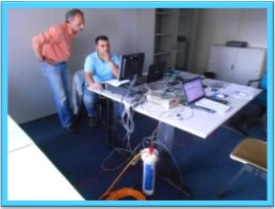 Testing the communication with the radon sensor
Testing the communication with the radon sensor
|
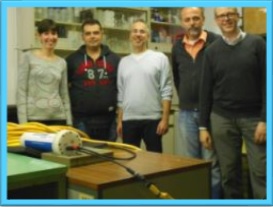 CNR and HCMR teams in the laboratory
CNR and HCMR teams in the laboratory
|
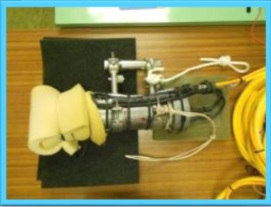 Radon sensor ready for being carried on board
Radon sensor ready for being carried on board
|
PAL III
PALIII deployed at the W1M3A observatory is the latest technological development of past autonomous underwater acoustic recorders.
PALIII is the result of the cooperation among a research Institution (HCMR – Greece) and a SME (HORST – Greece).
- Improved power management -> longer deployment
- FPGA technology -> increased real-time processing of acoustic data
- New smart and more advanced algorithms for wind speed and rainfall detection and quantification
- Housing minimization
KATERINA II
The need for a development of a new innovative in-situ sensor are:
- new measurement methods (i.e. rainfall intensity)
- cost-effective (hardware)
- low consumption (<1W in continuous)
- small dimensions
- deep water deployments (~ 4500m)
- Stand alone and automatic mode
- It can be installed on floating measuring systems (buoys), stationary platforms and mobile vehicles for continuous operation in the marine and aquatic environments
- It can operate autonomously (without connection with a computer) and provides time series saved in separate internal memories of the system
- The data can be either transmitted in real-time mode or can be saved in an internal memory
- It can provide data every specific time lag (user adjusted)
- The data communication is performed via RS232, USB and Ethernet protocols
- The system may provide automated data for specific radionuclides
- The power consumption (continuous operations) is 0.7-0.9W
- The dimensions of the system are small (cylindrical shape of 400mm length and 100mm diameter)

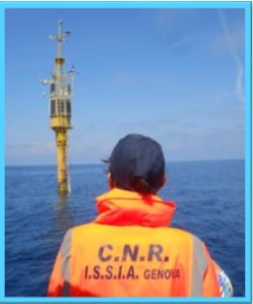
 Testing the communication with the radon sensor
Testing the communication with the radon sensor
 CNR and HCMR teams in the laboratory
CNR and HCMR teams in the laboratory
 Radon sensor ready for being carried on board
Radon sensor ready for being carried on board
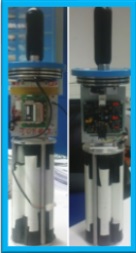
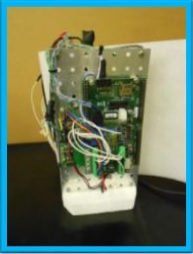
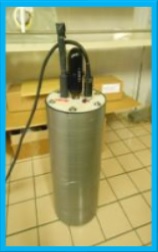
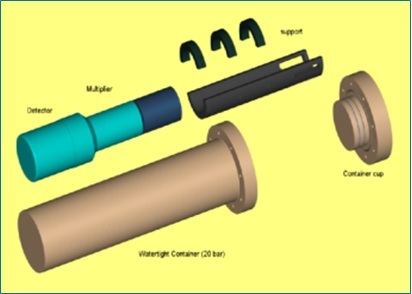
 Hellenic Centre for Marine Research
Hellenic Centre for Marine Research